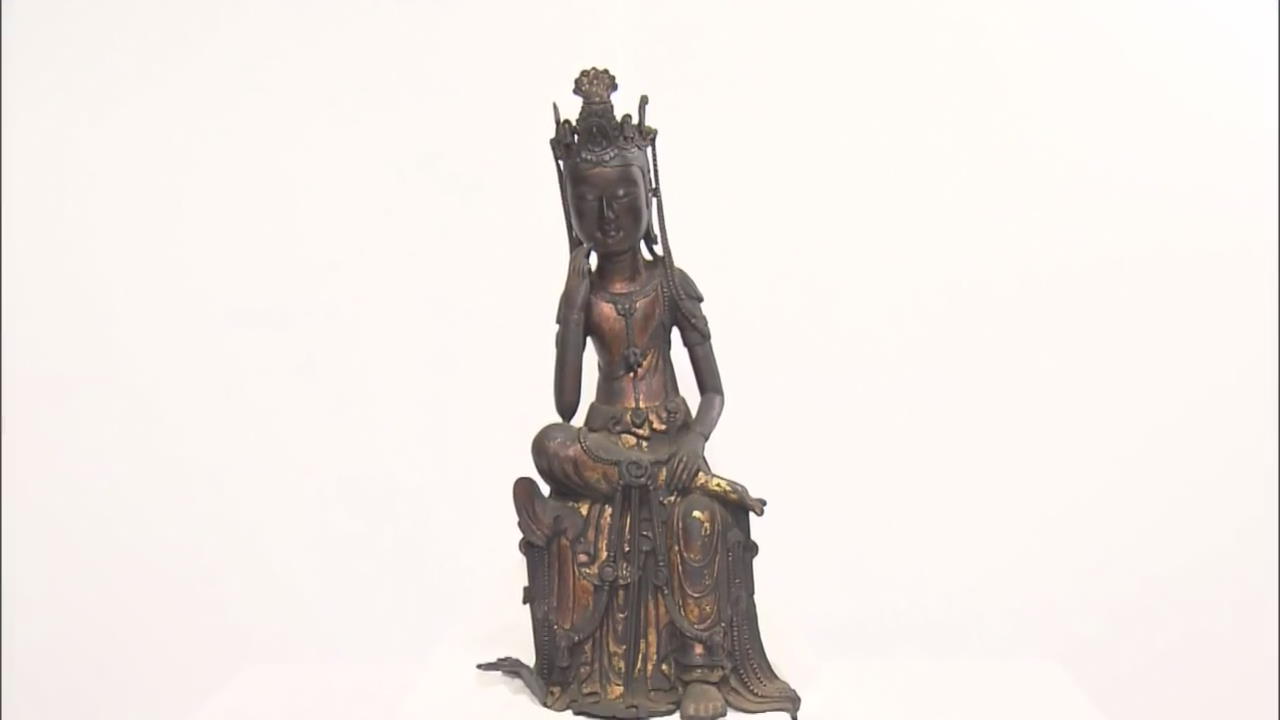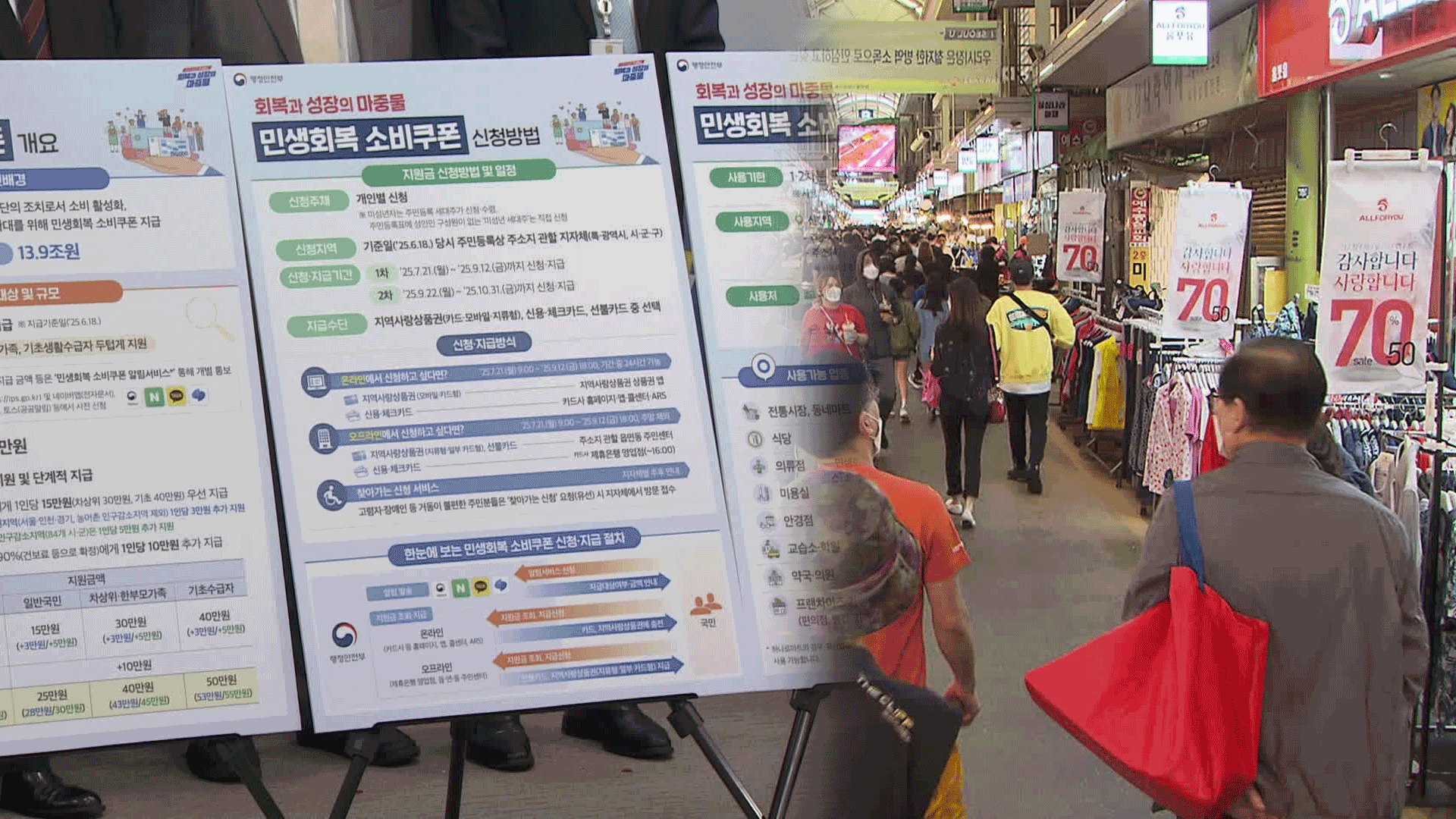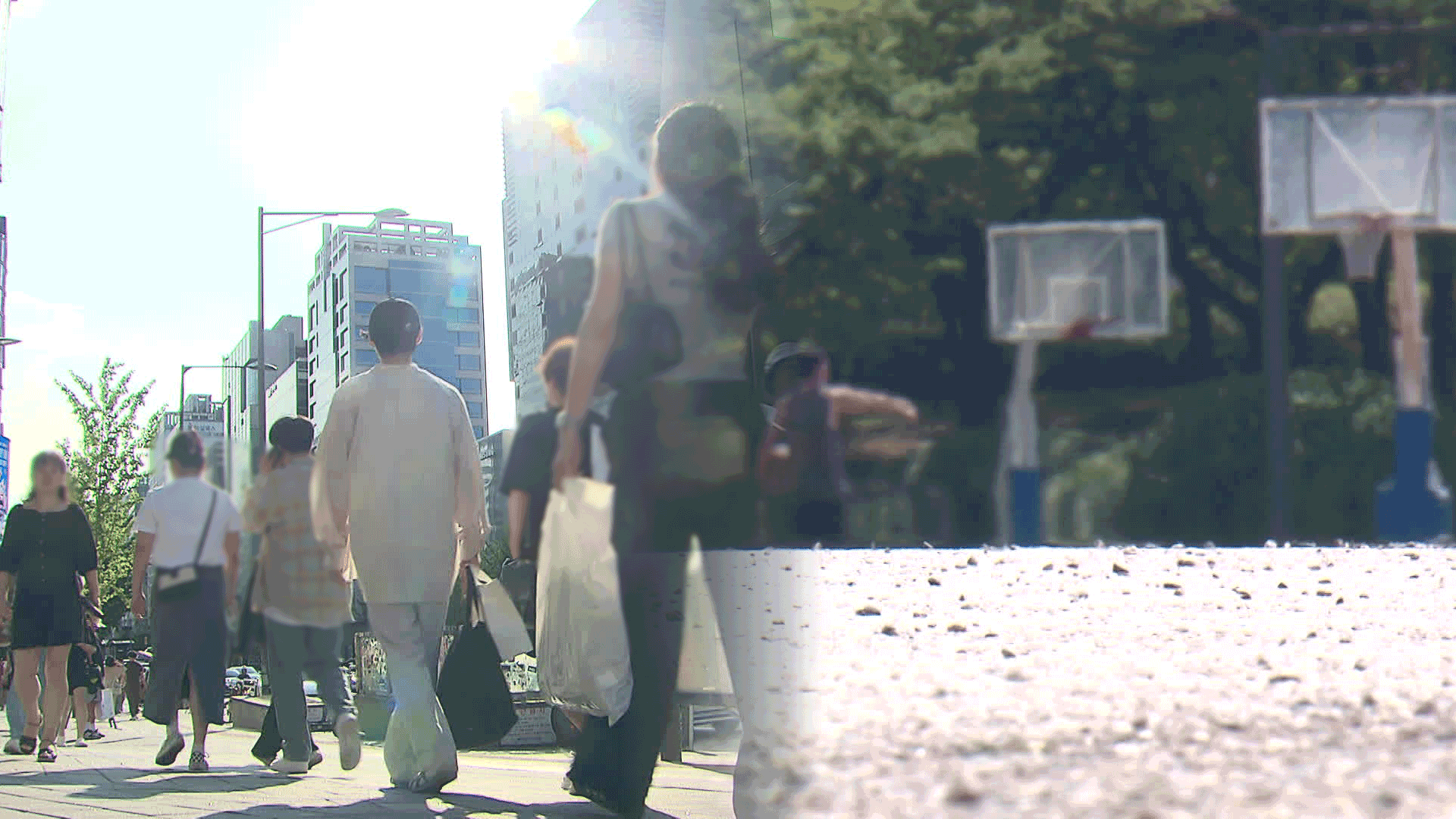Historic Statue Found
입력 2017.01.09 (14:08)
수정 2017.01.09 (14:11)
읽어주기 기능은 크롬기반의
브라우저에서만 사용하실 수 있습니다.
[Anchor Lead]
A statue depicting a Pensive Bodhisattva dating back to Korea's three-kingdom period was recently discovered in Japan. The work of art is drawing a lot of attention for its artistic and historic value.
[Pkg]
A Buddha smiles gently with a hand placed softly to the cheek. The image resembles a statue of the Pensive Bodhisattva, a national treasure of Korea. It has been found that this 50-centimeter-tall Buddhist statue was likely produced in Korea in the sixth or seventh century, some 1,500 years ago. In the past, it had been kept at a small temple in Kyoto, Japan, and regarded as a work from the Edo period in the 17th or 18th century. However, an appraisal by a research team of the Tokyo National Museum and Osaka University has found that the patterns engraved on the forehead and the dragon-motif design are similar to the features of statues produced in Korea in the sixth and seventh century.
[Soundbite] Prof. Minoru Fujioka(Osaka University) : "It is as beautiful as Japan's national treasures or comparable to them."
In addition, the statue consists of 90% copper and 10% tin, another similarity to statues from Korea's Three Kingdoms era. However, it has not yet been determined when and how the statue was relocated to Japan. Japan's National Treasure No.1 is also a wooden statue of a Pensive Bodhisattva, which was made in Korea during the Three Kingdoms period and later brought to Japan.
A statue depicting a Pensive Bodhisattva dating back to Korea's three-kingdom period was recently discovered in Japan. The work of art is drawing a lot of attention for its artistic and historic value.
[Pkg]
A Buddha smiles gently with a hand placed softly to the cheek. The image resembles a statue of the Pensive Bodhisattva, a national treasure of Korea. It has been found that this 50-centimeter-tall Buddhist statue was likely produced in Korea in the sixth or seventh century, some 1,500 years ago. In the past, it had been kept at a small temple in Kyoto, Japan, and regarded as a work from the Edo period in the 17th or 18th century. However, an appraisal by a research team of the Tokyo National Museum and Osaka University has found that the patterns engraved on the forehead and the dragon-motif design are similar to the features of statues produced in Korea in the sixth and seventh century.
[Soundbite] Prof. Minoru Fujioka(Osaka University) : "It is as beautiful as Japan's national treasures or comparable to them."
In addition, the statue consists of 90% copper and 10% tin, another similarity to statues from Korea's Three Kingdoms era. However, it has not yet been determined when and how the statue was relocated to Japan. Japan's National Treasure No.1 is also a wooden statue of a Pensive Bodhisattva, which was made in Korea during the Three Kingdoms period and later brought to Japan.
■ 제보하기
▷ 카카오톡 : 'KBS제보' 검색, 채널 추가
▷ 전화 : 02-781-1234, 4444
▷ 이메일 : kbs1234@kbs.co.kr
▷ 유튜브, 네이버, 카카오에서도 KBS뉴스를 구독해주세요!
- Historic Statue Found
-
- 입력 2017-01-09 14:00:51
- 수정2017-01-09 14:11:54

[Anchor Lead]
A statue depicting a Pensive Bodhisattva dating back to Korea's three-kingdom period was recently discovered in Japan. The work of art is drawing a lot of attention for its artistic and historic value.
[Pkg]
A Buddha smiles gently with a hand placed softly to the cheek. The image resembles a statue of the Pensive Bodhisattva, a national treasure of Korea. It has been found that this 50-centimeter-tall Buddhist statue was likely produced in Korea in the sixth or seventh century, some 1,500 years ago. In the past, it had been kept at a small temple in Kyoto, Japan, and regarded as a work from the Edo period in the 17th or 18th century. However, an appraisal by a research team of the Tokyo National Museum and Osaka University has found that the patterns engraved on the forehead and the dragon-motif design are similar to the features of statues produced in Korea in the sixth and seventh century.
[Soundbite] Prof. Minoru Fujioka(Osaka University) : "It is as beautiful as Japan's national treasures or comparable to them."
In addition, the statue consists of 90% copper and 10% tin, another similarity to statues from Korea's Three Kingdoms era. However, it has not yet been determined when and how the statue was relocated to Japan. Japan's National Treasure No.1 is also a wooden statue of a Pensive Bodhisattva, which was made in Korea during the Three Kingdoms period and later brought to Japan.
A statue depicting a Pensive Bodhisattva dating back to Korea's three-kingdom period was recently discovered in Japan. The work of art is drawing a lot of attention for its artistic and historic value.
[Pkg]
A Buddha smiles gently with a hand placed softly to the cheek. The image resembles a statue of the Pensive Bodhisattva, a national treasure of Korea. It has been found that this 50-centimeter-tall Buddhist statue was likely produced in Korea in the sixth or seventh century, some 1,500 years ago. In the past, it had been kept at a small temple in Kyoto, Japan, and regarded as a work from the Edo period in the 17th or 18th century. However, an appraisal by a research team of the Tokyo National Museum and Osaka University has found that the patterns engraved on the forehead and the dragon-motif design are similar to the features of statues produced in Korea in the sixth and seventh century.
[Soundbite] Prof. Minoru Fujioka(Osaka University) : "It is as beautiful as Japan's national treasures or comparable to them."
In addition, the statue consists of 90% copper and 10% tin, another similarity to statues from Korea's Three Kingdoms era. However, it has not yet been determined when and how the statue was relocated to Japan. Japan's National Treasure No.1 is also a wooden statue of a Pensive Bodhisattva, which was made in Korea during the Three Kingdoms period and later brought to Japan.
이 기사가 좋으셨다면
-
좋아요
0
-
응원해요
0
-
후속 원해요
0

















이 기사에 대한 의견을 남겨주세요.